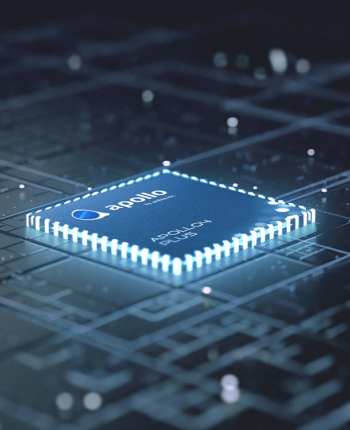
Allows marking of different Power use domains via GPIO pins. This is intended to simplicity power measurements using tools such as Joulescope.
Prompt: A gorgeously rendered papercraft earth of a coral reef, rife with colorful fish and sea creatures.
NOTE This is beneficial through element development and optimization, but most AI features are supposed to be built-in into a bigger application which commonly dictates power configuration.
This informative article focuses on optimizing the Electrical power performance of inference using Tensorflow Lite for Microcontrollers (TLFM) being a runtime, but most of the methods apply to any inference runtime.
“We believed we would have liked a brand new plan, but we bought there just by scale,” said Jared Kaplan, a researcher at OpenAI and on the list of designers of GPT-3, in the panel dialogue in December at NeurIPS, a leading AI meeting.
However Regardless of the amazing final results, researchers still will not recognize specifically why increasing the volume of parameters sales opportunities to better performance. Nor have they got a repair with the poisonous language and misinformation that these models discover and repeat. As the first GPT-3 team acknowledged in the paper describing the engineering: “Internet-qualified models have Web-scale biases.
Staying In advance from the Curve: Being ahead is usually crucial in the trendy day small business atmosphere. Enterprises use AI models to react to transforming markets, anticipate new sector needs, and get preventive steps. Navigating right now’s continually altering enterprise landscape just got much easier, it really is like possessing GPS.
Prompt: Archeologists find out a generic plastic chair while in the desert, excavating and dusting it with fantastic treatment.
Generative models certainly are a swiftly advancing location of study. As we carry on to progress these models and scale up the training as well as datasets, we can hope to inevitably create samples that depict completely plausible pictures or videos. This could by by itself locate use in numerous applications, such as on-demand from customers produced art, or Photoshop++ instructions for example “make my smile wider”.
Open AI's language AI wowed the public with its evident mastery of English – but is all of it an illusion?
Endpoints which are frequently plugged into an AC outlet can execute quite a few varieties of applications and capabilities, as they aren't restricted by the quantity of power they will use. In distinction, endpoint equipment deployed out in the sector are built to perform quite precise and minimal features.
Variational Autoencoders (VAEs) let us to formalize this problem from the framework of probabilistic graphical models in which we are maximizing a decreased bound over the log probability of the facts.
Autoregressive models which include PixelRNN instead teach a network that models the conditional distribution of every individual pixel offered prior pixels (towards the left and to the top).
If that’s the case, it is actually time researchers focused don't just on the dimensions of a model but on the things they do with it.
Accelerating the Development of Optimized AI Features with Ambiq’s neuralSPOT
Ambiq’s neuralSPOT® is an open-source AI developer-focused SDK designed for our latest Apollo4 Plus system-on-chip (SoC) family. neuralSPOT provides an on-ramp to the rapid development of AI Arm SoC features for our customers’ AI applications and products. Included with neuralSPOT are Ambiq-optimized libraries, tools, and examples to help jumpstart AI-focused applications.
UNDERSTANDING NEURALSPOT VIA THE BASIC TENSORFLOW EXAMPLE
Often, the best way to ramp up on a new software library is through a comprehensive example – this is why neuralSPOt includes basic_tf_stub, an illustrative example that leverages many of neuralSPOT’s features.
In this article, we walk through the example block-by-block, using it as a guide to building AI features using neuralSPOT.
Ambiq's Vice President of Artificial Intelligence, Carlos Morales, went on CNBC Street Signs Asia to discuss the power consumption of AI and trends in endpoint devices.
Since 2010, Ambiq has been a leader in ultra-low power semiconductors that enable endpoint devices with more data-driven and AI-capable features while dropping the energy requirements up to 10X lower. They do this with the patented Subthreshold Power Optimized Technology (SPOT ®) platform.
Computer inferencing is complex, and for endpoint AI to become practical, these devices have to drop from megawatts of power to microwatts. This is where Ambiq has the power to change industries such as healthcare, agriculture, and Industrial IoT.
Ambiq Designs Low-Power for Next Gen wearable microcontroller Endpoint Devices
Ambiq’s VP of Architecture and Product Planning, Dan Cermak, joins the ipXchange team at CES to discuss how manufacturers can improve their products with ultra-low power. As technology becomes more sophisticated, energy consumption continues to grow. Here Dan outlines how Ambiq stays ahead of the curve by planning for energy requirements 5 years in advance.
Ambiq’s VP of Architecture and Product Planning at Embedded World 2024
Ambiq specializes in ultra-low-power SoC's designed to make intelligent battery-powered endpoint solutions a reality. These days, just about every endpoint device incorporates AI features, including anomaly detection, speech-driven user interfaces, audio event detection and classification, and health monitoring.
Ambiq's ultra low power, high-performance platforms are ideal for implementing this class of AI features, and we at Ambiq are dedicated to making implementation as easy as possible by offering open-source developer-centric toolkits, software libraries, and reference models to accelerate AI feature development.

NEURALSPOT - BECAUSE AI IS HARD ENOUGH
neuralSPOT is an AI developer-focused SDK in the true sense of the word: it includes everything you need to get your AI model onto Ambiq’s platform. You’ll find libraries for talking to sensors, managing SoC peripherals, and controlling power and memory configurations, along with tools for easily debugging your model from your laptop or PC, and examples that tie it all together.
Facebook | Linkedin | Twitter | YouTube